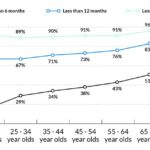Learning animation is a journey that varies greatly depending on individual goals and learning methods. Whether you’re interested in creating simple animated assets or complex cinematic sequences, this guide will provide insights into the time commitment required to master animation.
Factors Influencing Learning Time
Several key factors contribute to the overall time it takes to learn animation:
Complexity of Skills
The complexity of the desired animation skills significantly impacts learning time. Mastering basic animation in software like Photoshop might take a few weeks, while complex 3D animation for film and games can require years of dedicated study and practice.
Prior Experience
Previous experience with digital art software like Photoshop or Illustrator, or knowledge of design principles, can significantly accelerate the learning process. Familiarity with core concepts allows learners to focus on animation-specific techniques.
Learning Method
Choosing the right learning method is crucial. Self-teaching can be a longer process, while structured courses, bootcamps, or mentorship programs provide focused learning and faster skill development. Hands-on practice is essential regardless of the chosen method.
Individual Dedication and Practice
Consistent practice and dedication are paramount to mastering animation. The more time and effort invested in learning and practicing, the faster the progress will be. Setting realistic goals and maintaining a consistent learning schedule are key.
Specific Career Goals
Focusing on specific career aspirations within animation allows for targeted learning. Aspiring motion graphics designers will have a different learning path compared to someone pursuing character animation for feature films.
Animation Software and Tools
Learning industry-standard software is crucial for aspiring animators. Popular tools include:
- Adobe After Effects: Widely used for motion graphics, visual effects, and compositing.
- Adobe Premiere Pro: Primarily used for video editing, but also offers animation capabilities.
- Autodesk Maya: A powerful 3D animation and modeling software used in film, games, and visual effects.
- Blender: A free and open-source 3D creation suite offering a comprehensive range of animation tools.
- Cinema 4D: Known for its user-friendly interface and powerful animation features, commonly used in motion graphics and advertising.
Accelerating the Learning Process
While there are no shortcuts to mastering animation, several strategies can optimize the learning journey:
- Structured Learning: Enroll in formal courses, workshops, or online programs to benefit from structured curriculum and expert guidance.
- Focused Practice: Dedicate specific time for consistent practice, working on personal projects and challenging exercises.
- Online Resources: Utilize online tutorials, forums, and communities to learn new techniques, troubleshoot issues, and connect with other animators.
- Mentorship: Seek guidance from experienced animators for personalized feedback and industry insights.
- Building a Portfolio: Create a strong portfolio showcasing skills and creativity to demonstrate capabilities to potential employers.
Conclusion
The time it takes to learn animation is a personalized journey influenced by individual dedication, learning methods, and career aspirations. While mastering animation requires significant time and effort, leveraging effective learning strategies and focusing on specific goals can accelerate the process. Continuous learning and consistent practice are crucial for success in this dynamic and rewarding field. Aspiring animators should embrace the challenge and enjoy the creative process of bringing their ideas to life.
